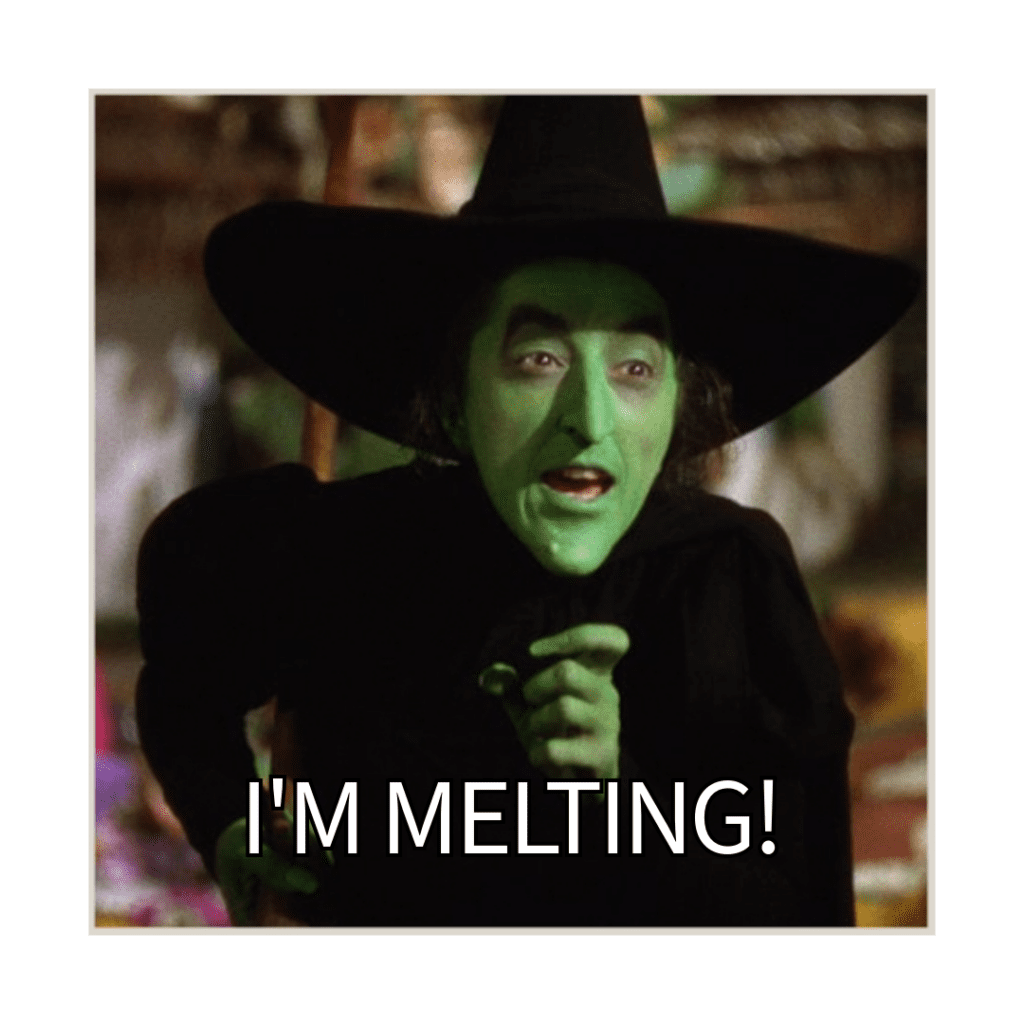Are you experiencing your air conditioning unit blowing hot (or warm) air instead of cool air? With June to August being Ohio’s hottest and most humid months, and heat and humidity levels at their all time peak, it’s reasonable to conclude that you may truly in fact feel like you are melting.

Jokes aside, we know the importance of restoring your air conditioner to its full functionality is a top priority. And there are multiple reasons why your air conditioning unit may not be emitting cool air. Join Fairfield-Hamilton Heating & Cooling as we discuss some of the prevalent reasons your AC unit may be discharging hot air and provide you with effective troubleshooting methods.
Let’s Troubleshoot:
The Thermostat
Let us direct our attention to the thermostat, the fundamental control unit of your HVAC system. Should the thermostat malfunction, it impacts the entire system’s functionality. A faulty thermostat struggles to communicate effectively with your HVAC system, influencing both the activation cycles and operational efficiency of your air conditioning unit. A significant number of system issues are often attributed to thermostat problems. Therefore, in cases of air conditioning malfunctions, a thorough examination of the thermostat may get your AC back up and running once again.
- Verify that the thermostat is powered on and responsive. Replacement of batteries may be required if applicable to your model.
- Check the thermostat setting is not on “heat.”
- Validate that the thermostat is set to “auto,” rather than “on.”
The Circuit Breaker
Is your air conditioning unit operational? It’s possible that the breaker switch has been tripped. If your unit is emitting warm air, this might not be an issue for you. However, it is still best to perform a check regardless.
Try inspecting your circuit to determine if the air conditioner has triggered it. If so, simply reset it to the “on” position. If this step resolves the issue, excellent! Just keep in mind that it is important to recognize that if your unit restarts but continues to trip the circuit breaker, it may indicate an underlying problem that requires attention from a licensed professional.
The Air Filters
A clogged air filter might appear insignificant, yet if neglected, dirty air filters can lead to significant problems. When an air filter is overwhelmed with dust and airborne pollutants, it restricts airflow, consequently leading to potential issues with critical components such as the motor, fan, or compressor.
Your air filters ought to be replaced every 1-3 months, depending on the type of air filter utilized. But to troubleshoot your current malfunctioning AC, go head and check your air filters now to ensure they do not require replacement. If this doesn’t fix the issue for you, please proceed to the following step.
The Evaporator Coils
The subsequent troubleshooting measure is closely linked with the preceding one. When an air filter becomes overly clogged, it may result in the accumulation of dust or loose debris on the surface of the evaporator coil. Contaminated evaporator coils are less efficient at absorbing heat from the air as designed, thereby impeding the heat exchange necessary for the cooling process to occur.
To address this issue, give your evaporator coils a once over. Should cleaning be necessary, it must be conducted with caution. For a comprehensive guide on properly cleaning your evaporator coils, please click here.
The Refrigerant
Similar to how a vehicle’s air conditioning system requires coolant to circulate cool air, your home air conditioning system functions in the same manner. The refrigerant within your AC unit facilitates the heat-cold exchange. Thus, a low refrigerant level or a leak can result in the system emitting warm air instead.
Unless one possesses HVAC certification, legal access to procure air conditioning refrigerant for one’s system is typically restricted. It would be in your best interest to leave this troubleshooting task to a certified professional. But also remain vigilant for these indicative signs of low or leaking refrigerant:
- Bubbling or hissing noises may be audible when the AC is inactive
- A lack of cool air emanating from the vents
- Ice formation on the evaporator coils
The Condenser
Finally, we must address the outdoor unit – the condenser. When the coils of a condenser become contaminated with dirt, their efficiency in extracting warm air from your home diminishes. This inefficiency can lead to a decrease in the flow of cool air. If not addressed promptly, prolonged neglect may result in damage to the condenser unit.
What action should you take if you discover that your condenser coils are dirty? First, ensure the power to the unit is switched off as a precaution. (Safety is paramount.) Next, with protective gloves on, gently clean the debris from the coils using a water hose, opting for a softer setting such as “shower” or “flat” to avoid damage. Be sure to avoid the “spray” setting. Securely hold the hose and begin washing from the bottom of the condenser, progressively moving across the coils from left to right, one inch at a time. Exercise patience and proceed with care to avoid damaging the unit. Remember, for more thorough maintenance, your HVAC technician can address the more intricate parts of the condenser during your next scheduled tune-up and safety inspection.
Encountering issues with your AC blowing hot air? There are several troubleshooting steps you can take on your own to resolve hot air issues with your AC unit. However, certain problems require the expertise of professionals. If your air conditioner still isn’t functioning properly, our team is here to assist you. Our technicians are not only NATE-certified but also bring a wealth of experience to each job. We’re available for emergency services 24 hours a day, 365 days a year to ensure you’re never left without assistance.
Prepare your air conditioning system for Ohio’s heat with your professional partners at Fairfield-Hamilton Heating & Cooling. Call us today at (513) 540-1716, or schedule an appointment online now by clicking here!











